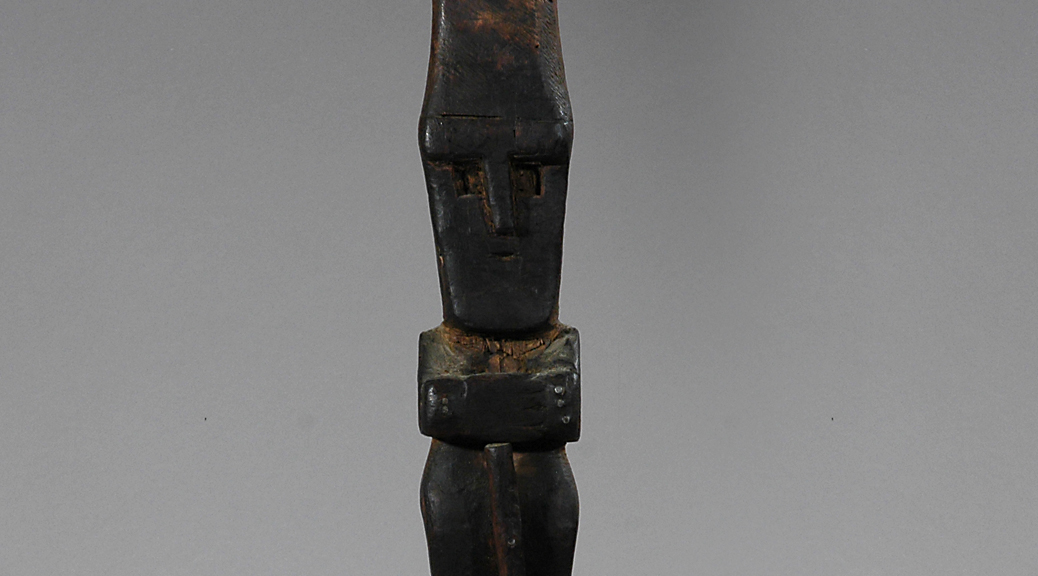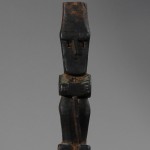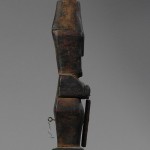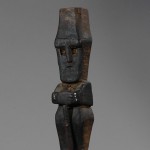SNK 1212-63
Kafiristan Memorial Figure, Kafiristan (now part of Afghanistan).
This is a very rare and interesting memorial figure from Kafiristan, a place surrounded by mystery, which not many people know about. It became an independent country in 1896 named after the word ‘kafir’, which means ‘the unbelievers’ – one who does not believe in Allah. After the emirates of Afghanistan had destroyed temples, idols, and killed all priests, they had ensured that the Kafirans converted to Islam. Kafiristan was then renamed ‘Nuristan’ which translates to ‘the enlightened country’ and then became a province in northern Afghanistan. Kafiristan is situated in the northeast corner of Afghanistan on the southern slope of the Hindu Kush Mountains, and bounded on the south by the Kabul River.
Sir George Scott Robertson wrote the first book about the Kafirans in Hindu Kush in 1890. Robertson was an officer in the English army and became known by defending the fortress of Citral against Afghan attackers. After this he was titled Lord and became deeply facinated by the Kafirans. Perhaps it was this event that inspired the author Rudyard Kipling to write the book “The Man Who Would Be King”, later filmed by John Huston with Sean Connery and Michael Caine from 1975. In the movie these Kafiristan Memorial Figure appears in a scene.
These figures were made in honor of deceased persons and should be raised within two years after the deceased has passed away. However, most of these tombs are now gone. They were burned and destroyed, because Islam prohibits images of people.
Age: Est. early 20th Century.
Condition: Despite age and its original use in the open landscape, the figure is in good condition. There are small sags here and there, which only give the figure more character.
Provenance: Collected in situ in the 1950s and sold to a Danish Private Collector via a Danish gallery. It was either acquired directly from Lau (Laurence) Sunde’s collection in Copenhagen, which dates back to the 1940s, or Lau (Laurence) Sunde was an adviser to the collector.
Sunde had a “Etnografica” boutique in 1948, that became recognized among collectors as the most specialized boutique of its kind at the time. Tribal and oriental artefacts were purchased from private collectors as well as at auctions in Paris, Amsterdam and London, among other places.
Full description of Lau (Laurence) Sunde will be forwarded by request.
Dimensions: H: 60 cm (23,6″)
Request price for Kafiristan Figure




